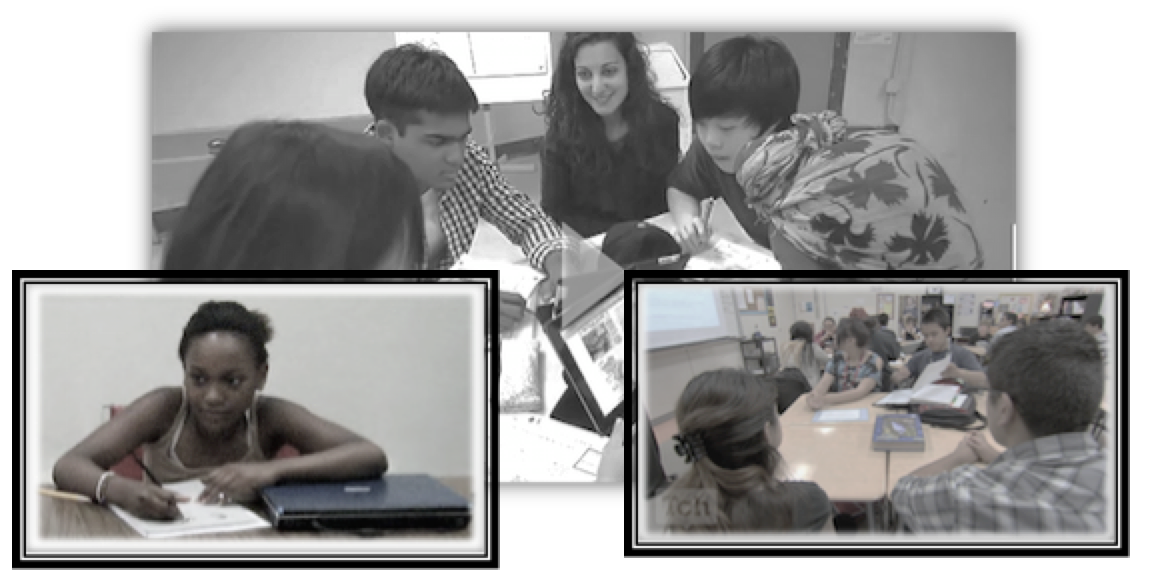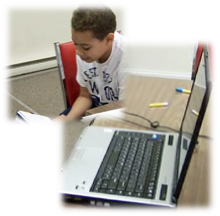Engaging 21st Century Learners
| Site: | Literacy Solutions On-Demand Courses |
| Course: | Cross-Cultural Communications and Understanding, Grades K-12 - No. ELL-ED-260 |
| Book: | Engaging 21st Century Learners |
| Printed by: | Guest user |
| Date: | Thursday, December 18, 2025, 11:15 PM |
Description
- Introduction: Engaging Learners
- 21st century Tools
1. Introduction: Engaging Learners
One can lead a student to the classroom, but whether the student will learn depends entirely on engagement, especially for the 21st century learner. Relevant and authentic learning experiences are those that lead to the highest student engagement (High & Andrews, 2009). Studies continue to show that the crucial components to student engagement are behavior and cognitive affect, or student learning. Cognitive affect may vary however, with a greater degree of engagement needed in inclusion classrooms. This degree will depend on typical development of students and those with IEPs. (Linnenbrink & Pintrich, 2003; Rhodes, 2007; Skinner & Belmont, 1993 In: High & Andrews, 2009). What are the signs of student engagement?
 Achievement
Achievement- Task persistence
- Regular attendance
- Sustained attention
- Excitement and interest for a subject
- Aspirations for further education (Rhodes, 2007 In: High & Andrews, 2009).
While it isn’t realistic to expect that all we ask students to do will be “fun” or even engaging, we can intermix them with learning opportunities that meet their interests in what they do now, and what they’ll do in the future. It doesn’t mean we need to boost their self-concept with each activity either. It means that we need to make all curricula relevant to students’ lives, then scaffold to and from everything else in an exploratory climate of high expectations (High & Andrews, 2009).
High and Andrews identify elements of an engaging curriculum as:
- Having student voice
- Honoring students’ questions because they are “filled with curiosity”
- Embracing their interests while tapping into their lives and experiences
- Allowing students to participate in decisions about their learning
Studies on student perceptions for learner engagement indicate three ultimate elements to an engaging curriculum (Bishop & Pflaum, 2005 In: High & Andrews):
- Active learning
- Relevant curriculum
- Individual pacing
Relationships forged among administrators and teachers are also pivotal to student engagement, because without administrative support, the likelihood teachers will create and maintain a safe and nurturing learning environment will or can lessen. Students need a warm learning environment to facilitate the risk-taking and participation demanded of an engaging 21st century curriculum. Administrative establishment of tone, policy, teacher regard, rapport and sense of community are crucial. Teachers who feel supported in what they do in the classroom are more likely to establish and maintain a nurturing and engaging classroom environment (Katz, Noddings & Strike, 1999 In: High & Andrews, 2009).
What are the learning hooks we can use to reel and keep students in?
- Find out what their curiosities are and build on them through civic involvement, recognition for achievement, learning differences, participation in decisions about learning. Use technology hardware or software, in keeping with the mandates of the IEP. Maintain accurate records for the data presented at case-specific team meetings.
- Hands-on learning via trips, virtual or real
- Weekly discussion of current events with video, podcasts and Internet news feeds
- Production of media used to convey information to parents
- Teaching students how to utilize print and visual elements in media sources to support their ideas as evidence. For example, ask them who a person is in a picture or painting displayed in a text, what a subtitle means, or what pictures or captions mean to the passage or story overall message
- Chunking out a media curriculum in short segments to facilitate discussion. For instance, show a video and discuss a segment at a time, have students take notes and ask questions before moving on to the next segment
- Discussing the overt and implied messages of each media source and then aid students in linking it to core content
- Use of iPads to drive hybrid instruction, such as responding to discussion forums, researching and problem solving via the Internet and then sharing results in whole class discussion
- Use of Smartboards to demonstrate strategy - writing on demand, locating and using evidence, smart Internet research, ethical use of (and respect for) copyright.
- Encouraging students to download or copy images and captions to use in their research or in extended projects by including the captions and citing their sources. Teach and model this process (Project Look Sharp in: Schiebe, 2004).
Schiebe, C. (2004). A deeper sense of literacy: Curriculum-driven approaches to media literacy in the K-12 classroom. The American Behavioral Scientist, 48(1), 60-68.
Servilio, K. L. (2009). You Get to Choose! Motivating Students to Read Through Differentiated Instruction. TEACHING Exceptional Children Plus, 5(5) Article 5.
2. 21st Century Tools
In a 21st century world of competition and innovation that doubles by the minute, our own students might just be out-pacing us in their use of technology. How do we know then that they’re using it effectively, applying smart research strategy, avoiding copyright issues, citing and using evidence to support new and old ideas? Unless we teach them how, odds are they probably  will not. The key is to engage them with what they’re familiar with, comfortable in, and what will grab and keep their attention. The studies we’ll review in this course will overview what student engagement looks inside and outside of technology, the classroom successes and challenges in using 21st century technologies, what it looks like in the classroom and most important: what students have to say about their own engagement.
will not. The key is to engage them with what they’re familiar with, comfortable in, and what will grab and keep their attention. The studies we’ll review in this course will overview what student engagement looks inside and outside of technology, the classroom successes and challenges in using 21st century technologies, what it looks like in the classroom and most important: what students have to say about their own engagement.
The American Association of School Librarians and other associations have set forth learning standards 21st century learning, lifelong personal growth, and enjoyment. They are as follows:
Learners use skills, resources and tools to:
- Inquire, think critically, and gain knowledge.
- Draw conclusions, make informed decisions, apply knowledge to new situations, and create new knowledge.
- Share knowledge and participate ethically and productively as members of our democratic society.
- Pursue personal and aesthetic growth.
The Common Core Standards require that students have “collaborative discussions”, problem solve and communicate as peers, “integrate technical information” to include comparing and contrasting information from multimedia.
The National Educational Technology Standards(NETS) evaluate what students need to know in, and about, a digital world to become effective learners and live productively within it. They set forth that students must work creatively and with innovation; communicate and collaborate; research with information fluency; think critically; problem-solve and make decisions. It is important that classroom teachers acquaint themselves with the performance levels and cognitive abilities of all students in their class.
All of these expectations inform classrooms rife with the tools and resources that work into high student engagement and rigorous learning paths that build student capacity for learning and working independently.
Easier said than done, because it’s about a recursive cycle of planning, monitoring and adjusting instruction, and using the tools that work into the interests of the 21st century learner. As learners in this course we’ll read about first-hand studies that have worked 21st century learning into classrooms through Internet-based technologies, handheld devices, and yes - PCs. Along with getting introduced to some new and some not-so-new 21st century tools, we’ll review and analyze strategy, strategy guides, lesson plans and video classroom demonstration of 21st century learning in action. Finally, we will use the strategies and tools gleaned from this course by importing them into new units and lessons to create our own standards-aligned 21st century learning plans.
Here are a few ideas to begin with:
- Use of Skype to connect and communicate with others over the Internet.
- Use of iPads for hybrid classroom instruction.
- Google Earth for geography and cultural lessons.
- Online math games using gaming apps.
- Presenting Discovery (and other) lessons using Smartboard.
- Virtual field trips using Smartboard, iPads or laptops.
- Maintaining a classroom blog for publication of student work and archiving of artwork and stories shared with parents and peers.
- Use of free online resources include lessons, quizmakers, rubric makers, graphic organizers and strategy guides. Depending on the type of disability, these methods may help compensate or remediate processing deficits that prevent students with disabilities from benefiting from traditional instructional techniques.
Let’s talk about the strategies and tools used in our classrooms to date, and how we might use these and other ideas in the future. Most important, let’s discuss what our own goals are for this course in the discussion forum that follows.
Onward and upward,